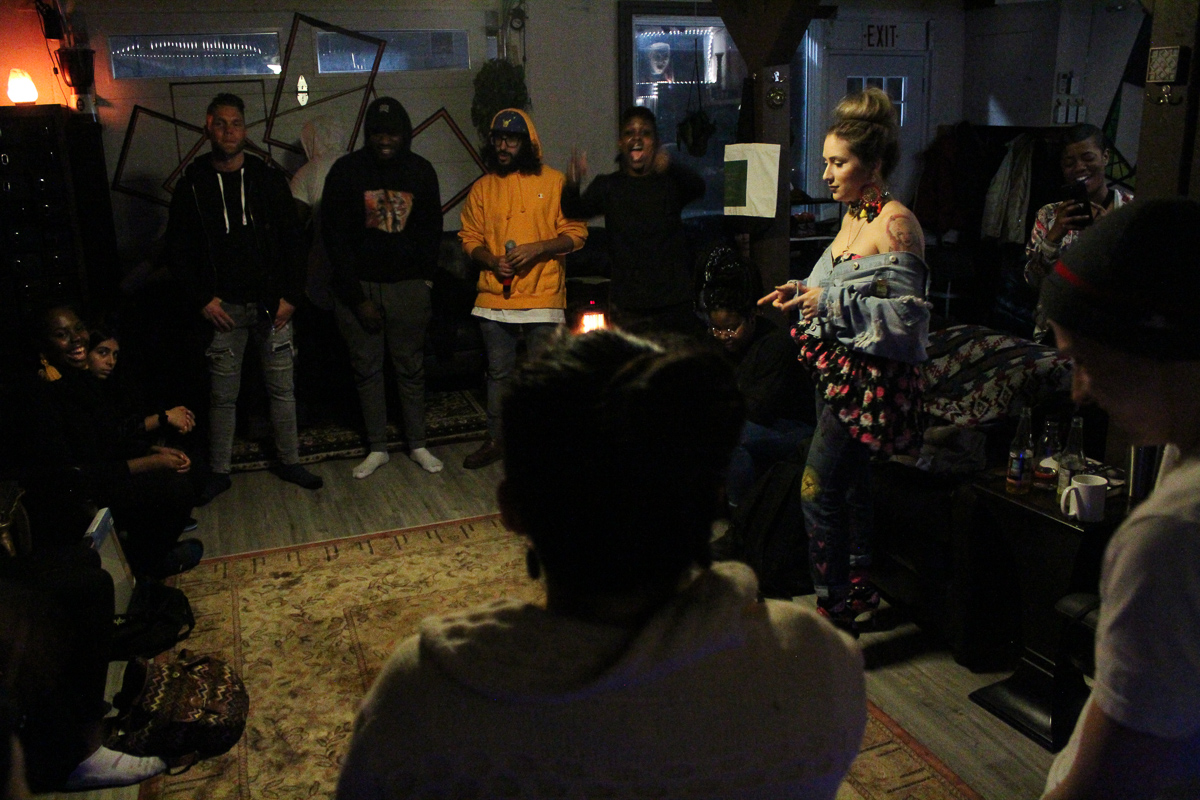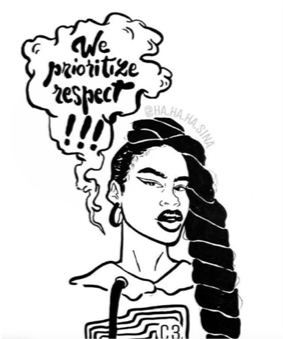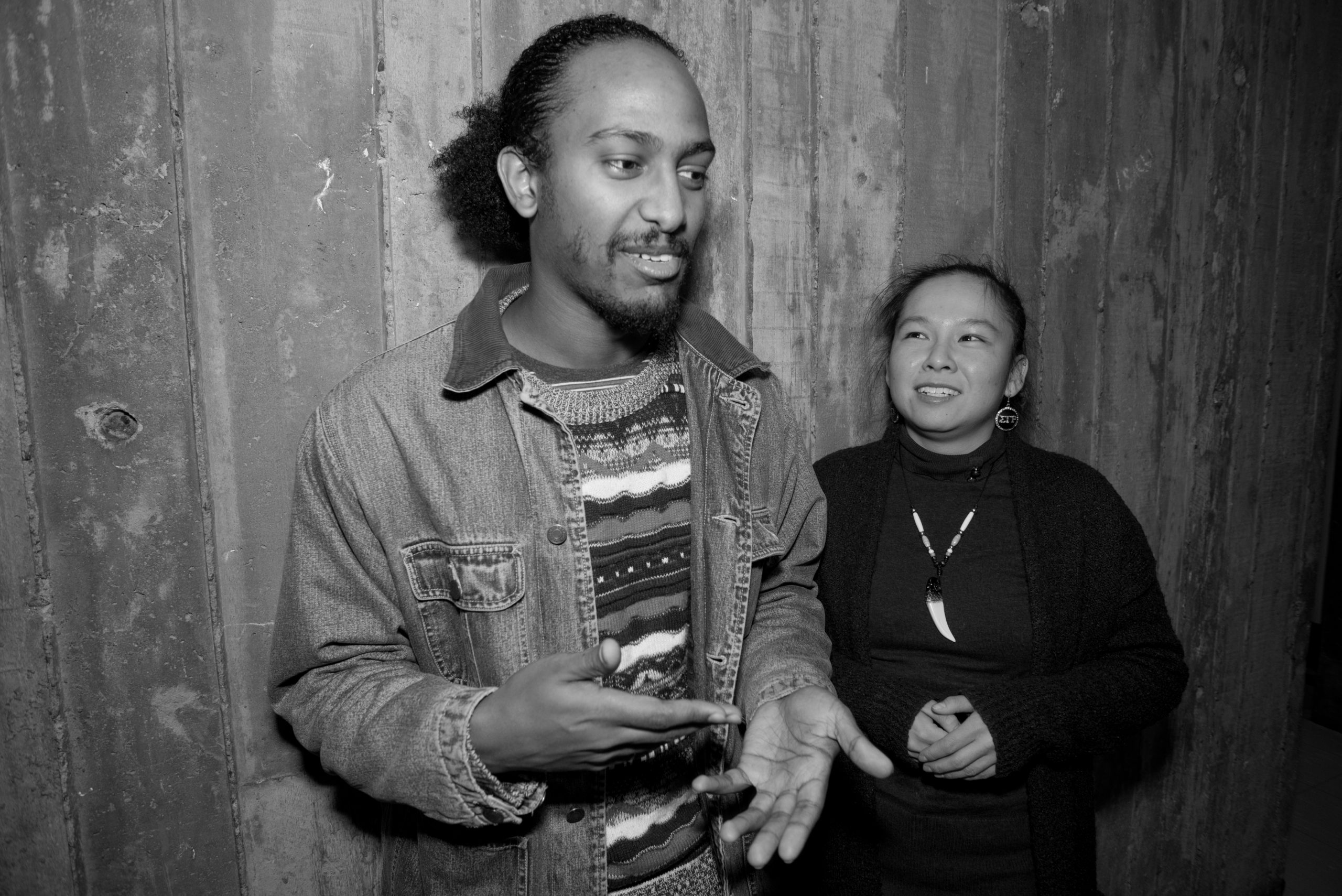A previous version of this article incorrectly spelled Lealem Abebe’s first name. The Charlatan regrets this error.
It was more-or-less a coincidence that brought Cap City Cyphers into existence.
It all started when Lealem Abebe ran into Nyugēn Anh Thu, who goes by the stage name King Kimbit (also known as Kim), in Manhattan.
Both are hip-hop artists in Ottawa and were vaguely familiar with one another. Kim invited Abebe along to a cypher–an informal, circular gathering of freestyle rappers–that she was checking out in Washington Square Park.
They each contributed a couple verses. “We were nervously following after some really great freestylers and rappers in that circle who are regulars,” Abebe chuckles.
“And New York is the birthplace of hip-hop,” Kim adds.
“All we could think during it and after it was, ‘Wow, this is so cool. I can’t believe they do this … why don’t we do this in Ottawa?’” Abebe says. “And Kim was like, ‘We can do this.’”
Returning from New York, Kim and Abebe wasted no time organizing a cypher of their own, inviting everyone to come and share rhymes.
“At first, it was just Cap City Cypher,” says Kim. “We were just planning to have the one, and we didn’t think of too much continuation.”

A year later, the group has put on 15 cyphers, with anywhere from 10 to 30 participants each time. “There’s clearly a need for it,” Kim continues.
As an artform, hip-hop itself has deeply political beginnings, coming primarily from low-income communities of colour and illuminating their everyday experiences.
“A lot of hip-hop, in its origins, was like, ‘Oh, someone is rapping about what’s going on in this place, or this ghetto, or this hood, or this street, and this is what’s happening in my street,’” Abebe says. “It was sort of like a rhythmic, lyrical, journalistic form.”
Honouring these roots, Cap City Cyphers serves the idea of people coming together, uninhibited by any aspect of who they are, what skills they have, or where they come from, as a radical form of social togetherness.
According to Abebe, the hip-hop community in Ottawa is full of intention and hunger, and already more collective than most. “People are very interested in working together because we have this collective goal of putting Ottawa on the map that maybe cities that are more established don’t have to worry about,” he says. “It’s diverse, and it’s eager, and it’s collaborative.”
It’s a collaboration that beats with the pulse of hip-hop and a grassroots dedication to the spirit of collective artistry.
“Our main goals at Cap City Cyphers are, number one, to hold safer spaces for creatives to share, foster, and develop skills related to hip-hop culture, mainly freestyle rapping, beat-making, and live drawing,” Kim says, reciting the group’s mandate.
From day one, Cap City Cyphers has prioritized respect. That means zero tolerance for things such as racism, sexism, homophobia, and ableism.
“We’ve kind of always come with that mentality of wanting to bring hip-hop back to its roots of being an inclusive artform, and intentionally making it inclusive and widening it,” Abebe elaborates. “For example, we have land acknowledgements when we start our freestyle cyphers.”
“We try to make a point that the freestyle cypher is not about hogging the space or owning the space, so we try to encourage sharing the … microphone, and kind of passing it along to everyone and giving everyone an opportunity to participate,” he continues.

If you plan on making insensitive comments, best not do it in the circle–you won’t get away with it.
“We try to check that when people are freestyling, which can be tricky, but we’ve tried to come up with ways to lovingly call people out,” Abebe grins.
No misogyny allowed. Racialized stereotypes not accepted. Transphobia? Not here.
Kim says the group sometimes messages freestylers afterward, pointing out something harmful that was said and how it affected others in the circle.
“A lot of rappers talk about what they do with other people’s girlfriends, and that’s really unnecessary and harmful to women,” she says. “And people will be like, ‘Oh, I never thought of that, thank you for pointing that out to me.’”
Of course, hip-hop doesn’t revolve solely around music. Art, graffiti, style and design are also integral to the culture.
Hasina Kamanzi, 20, is the group’s resident visual artist. At cyphers, you can often spot her sitting on the sidelines, sketching out the action in front of her.
“I think a lot of people are amused,” says Kamanzi, who creates art mononymously as “Hasina.” “They see me taking notes, and they say, ‘Okay, is she stealing bars? What is she doing?’”
Once they realize what Kamanzi’s up to, the artist says she is always met with friendly curiosity.
“When they realize what I’m doing, they are like, ‘Oh my god, can I see?’ And that reminds people that visual art is very much a part of hip-hop.”

This combats the singular vision of what hip-hop can be.
“We tend to think of hip-hop as either a dance movement, or like the songs, but not in terms of visuals,” Kamanzi says. “But for me, visual arts are what’s at the forefront of hip-hop. Even when you’re singing, you’re trying to paint a picture in the heads of people.”
That’s what it’s all about–slowly but surely transforming the way the city and its people think about hip-hop. Even simply hosting the cyphers outside, often in the Byward Market during the summer, where the public can watch or join in, has brought the radical messages of hip-hop back out to the streets.
“Just doing outdoor cyphers will invite people to see, ‘Oh, it’s people rapping, and, they’re not thugs,” Kim says. “The more visible we are, the more people will understand us as rappers, because rap has been a marginalized artform.”
Moving forward, Cap City Cyphers is hoping to push hip-hop into the Ottawa consciousness by hosting movie screenings, workshops, and open mics. They are currently in the process of collectivising–opening up the group for fresh voices in their mini-cultural movement.
“There’s just this feeling you have when you see your own home, or your own home city, create a space for you for something you feel you have to go elsewhere to get,” Abebe says.
Kim nods in agreement.
“I feel like we do a lot for the city,” she says. “Providing a platform where people are encouraged to collaborate rather than compete.”
Feature image by Tim Austen.






